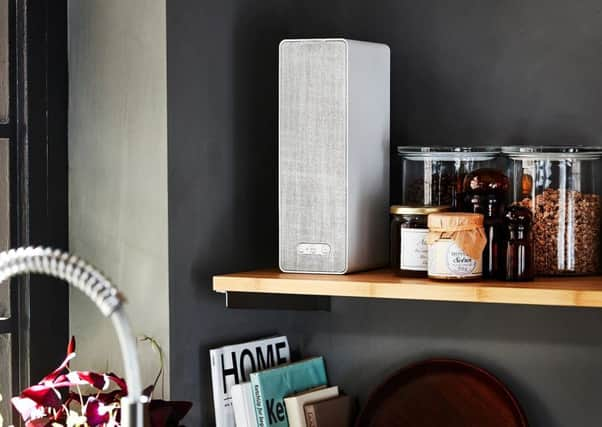How do Ikea’s bookshelf wi-fi speakers stack up?


Its Symfonisk range is also proof that the best ideas are the simplest ones. “Range” is perhaps an overstatement, because there are at present only two Symfonisks, but either could reinvent the way you pipe music around your house.
Ikea has partnered with the American audio firm, Sonos, to create a table lamp that’s also a loudspeaker, and a bookshelf speaker that looks like it’s part of the furniture. If you have used Sonos before, you will be familiar with the principle – you connect one or more speakers to your home wi-fi network and then stream music to them from 100 or more sources, some free, some paid-for.
Advertisement
Hide AdAdvertisement
Hide AdRemote speakers are no longer unusual, but Sonos has established a degree of market dominance by offering a quality of sound comparable to conventional hi-fi speakers. However, its relatively high cost has made it a choice for aficionados, not impulse buyers who came in just for a set of plates.
Its collaboration with Ikea changes that. The Symfonisk bookshelf speaker, available in black or white, costs just £99, a third less than the cheapest with the Sonos label alone, and sounds almost as good. Not quite as detailed, perhaps, but not bad.
It’s more versatile than a “pure tech” speaker, too. You can mount it on a wall and use it as a bedside shelf, or hang it from the utensil rack in the kitchen. And it’s the right size to fit snugly on that Ikea bookcase in your lounge.
At £150, the Symfonisk table lamp is more flexible still. It’s basically a speaker with a bulb and a lightshade on top, but because it has been designed with looks in mind, as well as sound, it is an attractive addition to a room. It’s too big for a bedside table, but it’s perfect on the sideboard or beside the TV.
Advertisement
Hide AdAdvertisement
Hide AdThese are not to be confused with the gimmicky, voice-activated speakers popularised by Amazon and Google, nor with Bluetooth speakers that connect to your phone. You don’t tell them what to play by shouting at them, but by using Sonos’s proprietary app. This comes preconfigured with thousands of radio stations worldwide, including the BBC networks, and also connects to the music you have stored on computers across your network. If, however, you do have a separate voice-activated controller, you can link it to Sonos.
Both Ikea and Sonos are working on the principle that once you have bought a speaker, you will want another one, and then a few more still. This is particularly so if you want to replicate or replace a hi-fi system, since you will need two to listen in stereo and five to get surround sound. A traditional audio system may well be cheaper, therefore.
But the advantages of wi-fi are considerable: there are no cables from one speaker to another; just a mains lead for each one. And you can play different music in different parts of the house, grouping two or more rooms together, if you want. There is also no need for a physical music collection because everything – whether on a hard disk in your house, on Spotify or on Radio 4 – is accessible directly from the app.
It is worth checking the Sonos website before buying, because some of the app’s features are not yet compatible with Android devices, but if you’re in Ikea anyway and find yourself drawn to one, it won’t be the worst impulse buy of your life. At least there are no screws to go missing.